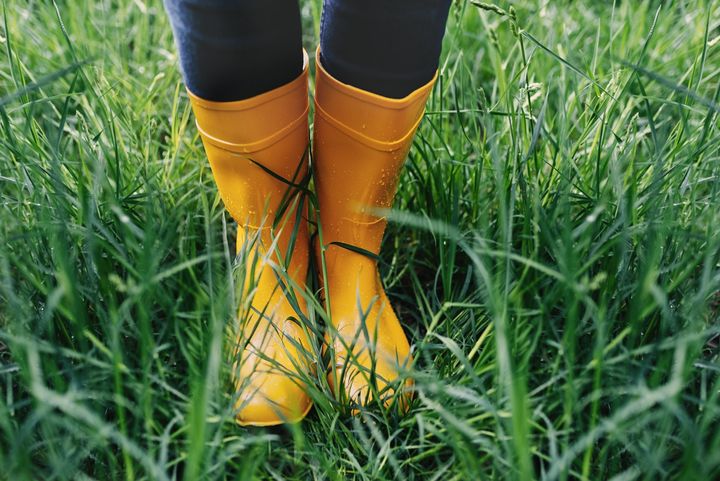
Ah, soggy ol’ Britain. An island where your outfit on any given day should account for all possible weathers because truly, who knows what the day holds? This is especially true during spring when we don’t seem to have any consistency for three solid months.
Following a few weeks of hopeful sunshine, a lot of the country now has, predictably, downpour. Which is set to last for at least the rest of the week with flood warnings even being issued for parts of England, according to the Met Office. Yay.
Another issue that comes with this weather is that our gardens can get flooded (also known as waterlogged), which is dreadful news for those of us that were excited to finally get back into gardening after a long winter.
However, there are some things we can do to help our lawns recover.
How to fix a waterlogged lawn
Rhiannon Moore, a garden expert at Toolstation, shared her tips for tackling a flooded garden:
Remove any built-up debris
Moore advises that once the water has receded, you should immediately remove any leftover debris such as sticks and leaves to clear the surface of the lawn. She added that you shouldn’t use a metal rake for this as it’ll damage the already weakened soil surface.
Aerate the soil
Using a garden fork or aeration tool, spike holes into the soil surface that are no more than six inches deep.
Fertilise the soil
Using a feed that’s rich in phosphorus, fertilise your lawn. This will help to promote root growth as well as replace the lost nutrients in the soil.
Moore added: “It’s also important to remember not to mow a lawn after a period of extensive rain and make sure to avoid watering until the ground has dried out.”
Early signs of waterlogging
If you’re not familiar with waterlogging or are new to the world of gardening, you may not be aware of the signs of a flooded lawn. Moore shared the most important signs to look for:
Bare patches - As the grassroots start to die, it will result in bare patches of lawn. These first strike in the worst affected area
Moss patches - Whilst a small amount of moss is beneficial to a lawn, large amounts of it can cause the grass to die as the moss steals the ground nutrients
Excess weeds - Rogue weeds are a common sight in lawns however, they can quickly take over a weakened lawn and starve the remaining grass of nutrients
Long-lasting solutions for a waterlogged lawn
Level out the ground - If the flooding is only happening in isolated areas, you can add some topsoil and new turf to level out the uneven lawn
Add garden walkways - Each time you walk over your lawn, you compact it beneath your feet. Adding a simple paved garden walkway will help to protect your lawn from damage
Consider a French Drain - If flooding is a regular issue, you may want to consider installing a French drain. This is a gravel-filled ditch with a perforated underground pipe to drain away the water. It’s best to check with your local planning authority before starting any digging
Let’s hope for sunnier days soon!